By Dr. Natalie L. Marks, DVM, CVJ, CCFP, FFCP-Elite
As a practicing veterinarian, I frequently ask cat caregivers, “Have you looked in your cat’s mouth lately?” I tend to receive various responses, from shock to laughter to disbelief, and I know why! Looking inside your cat’s mouth, let alone brushing their teeth every day, is not something many cat caregivers feel comfortable with or have trained their cat to see as a positive interaction. However, dental disease is incredibly common, very painful, and can negatively impact your cat’s quality and quantity of life.
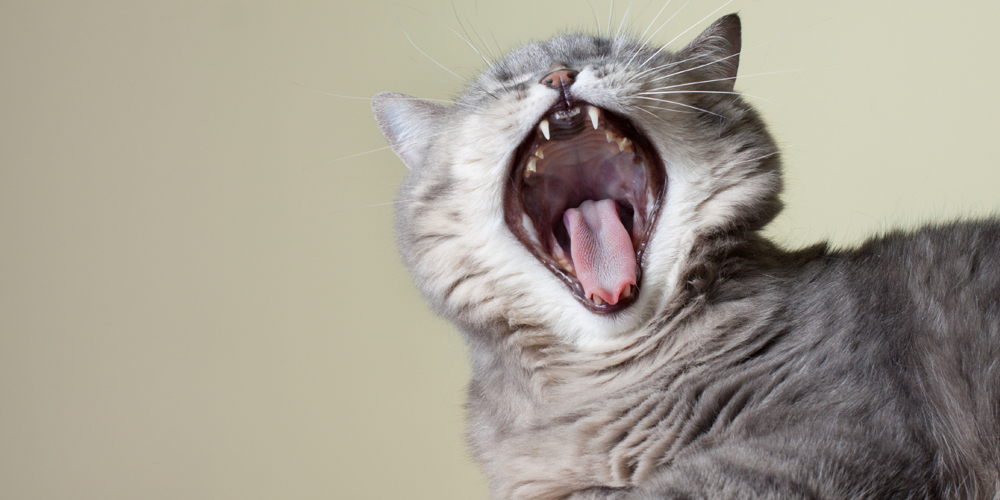
Why Focus on the Mouth?
As many as 70% of cats have some form of periodontal disease by the time they are two years old.1. This is a staggering number, especially considering how early this disease can begin. As this develops, not only can this be a source of significant pain for your cat, but it can also create disease in the heart, liver, and kidneys.2 It’s never too early to start creating positive associations with your cat and their mouth being handled and opened to create healthy daily habits and help identify disease earlier.
What Are the Three Main Categories of Dental Disease?
While dental disease can take many forms inside your cat’s mouth, the three most common are gingivitis, periodontitis, and tooth resorption. Let’s look into each category with a little more detail.
Gingivitis technically means inflammation of the gingiva – it looks like red, swollen, and painful gums in the mouth. Gingivitis starts when plaque, a film that traps bacteria on the teeth, accumulates and then moves deeper into the groove where the gums meet the tooth base. Your cat’s immune system sees these bacteria and mounts a response of inflammation. This can be made worse when the jaw is crowded, teeth are malpositioned, or there has been little to no previous oral health care.
The second category is periodontitis. This irreversible syndrome develops as a consequence of untreated gingivitis. With periodontitis, there is a weakening of the tissues that attach the teeth to the gums and bone. This is due to the bacteria in plaque releasing damaging substances and the inflammation from the cat’s immune system. Because this disease starts with gingivitis, we can see many of the same clinical signs like red, swollen, or bleeding gums. But, because the disease has progressed, your cat may also have changes in appetite, bad breath, gum recession, and even loose teeth.
The last most common category, and one of the most frustrating for veterinarians, is tooth resorption. Here, the tooth structure starts to break down from the inside of the tooth outwards. This is the most common cause of tooth loss, with anywhere from 30 to 70% of cats affected. The frustration for veterinarians comes from the fact that the cause of tooth resorption remains unknown.3 This syndrome has more specific signs. The first sign of resorption is a pink dot or defect in the tooth where it meets the gumline. Unfortunately, while this may look very small at the time, the tooth is already quite damaged when the lesion is noted. Like gingivitis and periodontitis, this is also a very painful condition and is best identified early to discuss optimal treatment options.
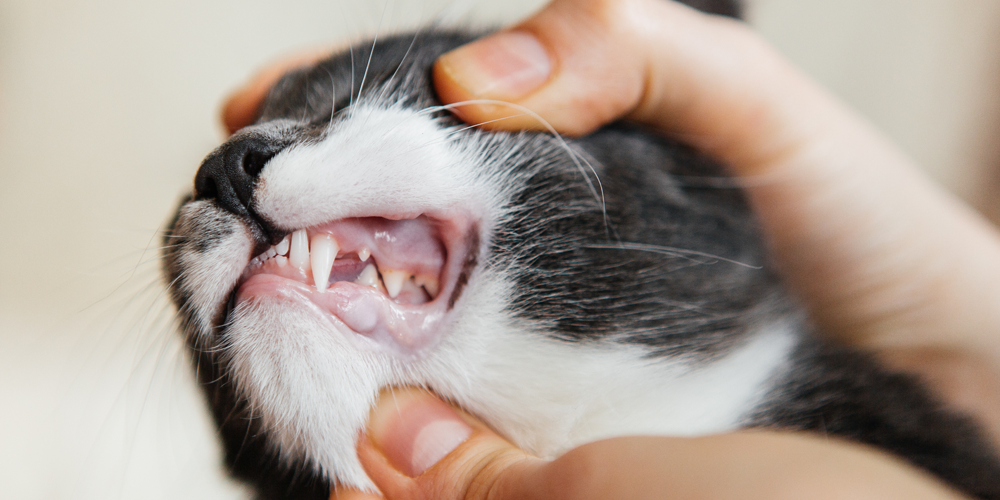
Is My Cat at Risk?
While any cat can technically develop periodontal disease, a recent study helped us identify different cats that are at increased risk. Certain breeds like Siamese (18.7%), Maine Coon (16.7%), British Short Hair (15.5%) and Crossbreeds (15.4%) are at the top of the list. Other breeds like Abyssinians, Somalis, Balinese, Oriental short/long hair, and Tonkinese are also more susceptible.
Another group of cat breeds at risk are those in the brachycephalic (short-faced) breeds like Himalayans, Persians, and Burmese. Their unique jaw and skull structure crowds teeth, placing them in abnormal positions and making it more challenging to keep them healthy. And, as cats age or deal with diseases like feline leukemia virus (FeLV), feline immunodeficiency virus (FIV), Bartonellosis (cause of cat scratch fever), calicivirus, and diabetes mellitus that suppress their immune system or ability to fight off infection, their risk increases, too.
Putting breed and age aside, it’s essential to remember that cats are carnivores. Their teeth were developed to catch and eat prey, and this act kept their teeth clean and healthy. These actions are unavailable for indoor cats or provided by most typical present-day cat food diets, which can add to dental problems.2
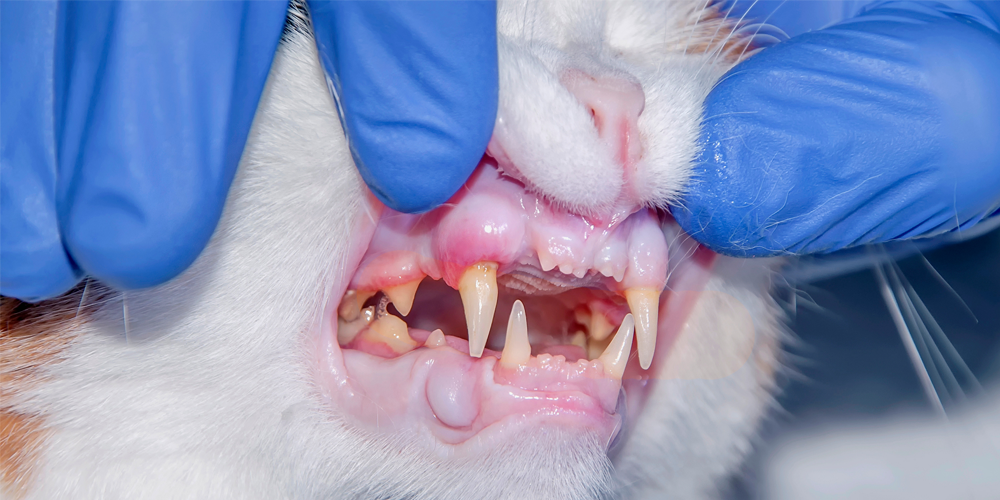
Signs of Dental Disease
One of the most common reasons cat caregivers make veterinary appointments is noticing bad breath (halitosis). But this is just one sign and, in fact, a later sign of possible dental disease. It’s essential to monitor your cat’s mouth frequently for other earlier indicators such as red gums (gingivitis), swelling, bleeding, red dots on the teeth along the gumline, pigment changes, growths, and discolored teeth from plaque or calculus (calcified bacterial film).
But, as we know, the mouth can affect the entire body, and we need to also watch for other abnormal behaviors like drooling, changes in sleeping patterns, rubbing cheeks excessively on furniture or carpet, resistance to petting, refusal of interaction with housemates, and changes in appetite.
Appetite Monitoring is Key
Let’s ensure we are all on the same page about the concept of inappetence. Inappetence has three different forms. The first is anorexia, a complete loss of appetite, and one that is typically used to cover all three types incorrectly. Anorexia can sometimes be more challenging to identify in multi-cat households or with cats that are on automatic feeders. However, two other forms of inappetence often get overlooked or even brushed aside as “normal.” One is hyporexia, which is a decrease in appetite. This can be as little as a 10% change and easy to miss. The other is dysrexia, or a change in the pattern of eating. Think about your cat’s eating routine. Does your cat usually knock picture frames off the nightstand at 4 am, begging for breakfast, but is now taking all day to eat? Even though the same amount of food is being consumed, the change in pattern is a concern and indicates the need for a veterinary visit. We also want to be watching for unexpected weight loss.
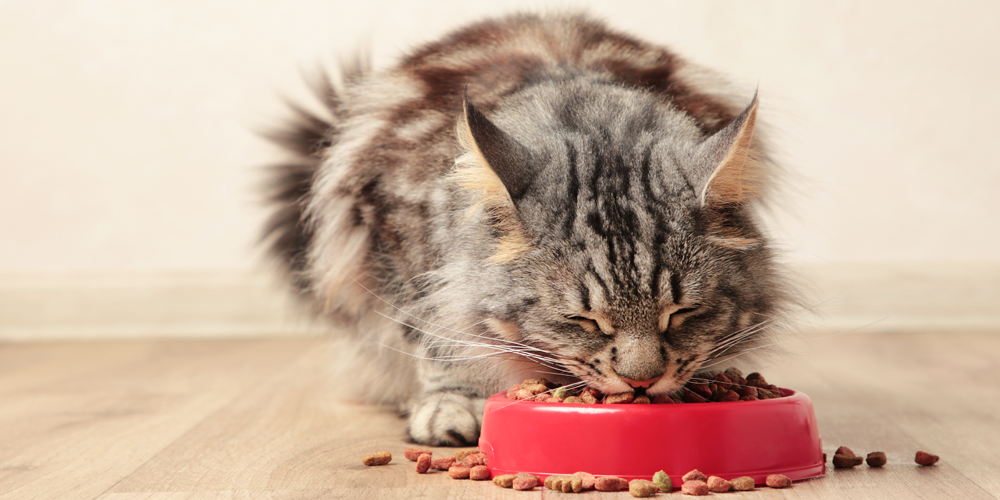
What’s Next?
Dental disease is already advanced if we wait to notice bad breath. Instead, consider these four recommended steps to keeping your cat’s mouth healthy.
First, start with a baseline exam with your veterinarian. During this physical, your veterinarian will assess your cat’s gums, teeth, back of the throat, and other structures, looking for any signs of redness, swelling, bleeding, plaque, recession, pigment, or pain, and check the overall health of your cat for other risk factors.
At that point, the following recommendation will typically involve professional intervention in the form of dental cleaning under anesthesia and full-mouth dental X-rays to look at the health of tissues under the gumline. During this procedure, plaque and calculus (calcified plaque) will be removed, gaps between the gumline and teeth will be probed and assessed, and any disease under the gumline will be identified through X-ray interpretation. This may reveal teeth that need to be extracted due to permanent disease or fractures.
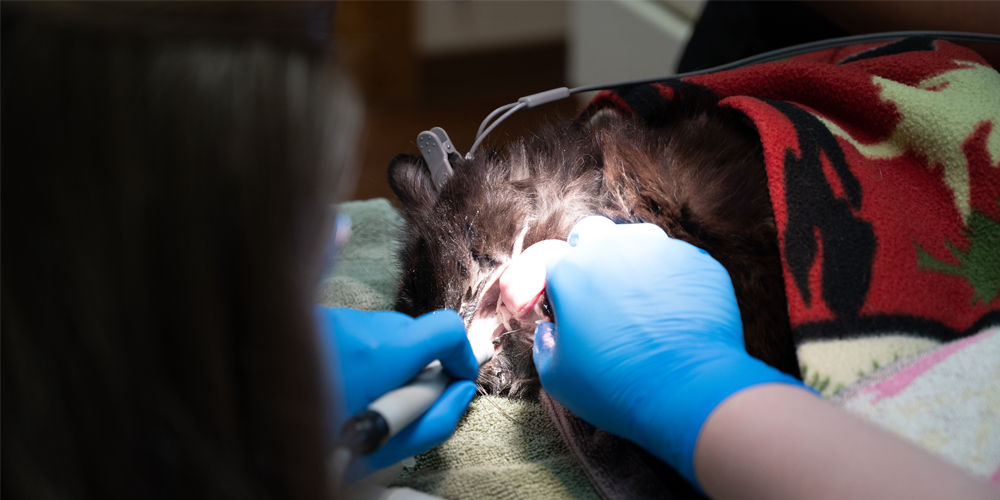
This allows your cat to come home with a fresh slate of oral health and start with consistent home care after a recovery period of healing. The goal here is the removal of plaque buildup – plaque that stays on a tooth for more than three days becomes calcified, and this cannot be removed with a toothbrush. Early brushing is best, but other options include wiping teeth with a gauze pad, treats, oral rinses, dry kibble, and adding a supplement to your cat’s water source.
Finally, it’s essential to talk about diet. Dry diets have now been created to enhance cat oral health. These dental kibbles are unique because they are bigger than regular dry kibble, forcing your cat to chew them rather than swallow them whole. When chewed, the larger kibble can scrape plaque off the teeth that puncture through them. These diets are also noted with the seal VOHC, which represents the Veterinary Oral Health Council. There are two levels – plaque control and tartar control, and when used every day, these diets will help your cat’s mouth stay as healthy as possible.
About Dr. Natalie L. Marks, DVM, CVJ, CCFP, FFCP-Elite
Dr. Natalie Marks is an internationally renowned veterinarian and educational consultant with over 20 years of experience as a practicing veterinarian. Dr. Marks is dedicated to helping pet owners and veterinarians work together as a team to provide the best care for their pets’ health and wellbeing. In 1998, she graduated with her bachelor’s degree in Animal Science from the University of Illinois before going on to obtain her Master’s and Doctorate in Veterinary Medicine from the University of Illinois College of Veterinary Medicine. Dr. Marks’ dedication to the field of veterinary medicine has earned her numerous awards and accolades, including the Dr. Erwin Small First Decade Award, Petplan’s Veterinary of the Year in 2012, and America’s Favorite Veterinarian from the American Veterinary Medical Foundation in 2015. In addition to being a familiar face on both local and national media outlets, Dr. Marks has been a lecturer on a variety of topics at conferences like VMX, WVC, and AVMA.Wiggs RB, Lobprise HB. Periodontology. In: Veterinary Dentistry: Principals and Practice. Philadelphia: Lippencott-Raven; 1997:186-231.
- Wiggs RB, Lobprise HB. Periodontology. In: Veterinary Dentistry: Principals and Practice. Philadelphia: Lippencott-Raven; 1997:186-231.
- Pet Dental Care. AVMA. https://www.avma.org/resources-tools/pet-owners/petcare/pet-dental-care Accessed November 7, 2022.
- https://www.vet.cornell.edu/departments-centers-and-institutes/cornell-feline-health-center/health-information/feline-health-topics/feline-dental-disease
- O’Neill DG, Blenkarn A, Brodbelt DC, Church DB, Freeman A. Periodontal disease in cats under primary veterinary care in the UK: frequency and risk factors. Journal of Feline Medicine and Surgery. 2023;25(3)
- When Kitty Needs a Dentist. Cornell Feline Health Center. https://www.vet.cornell.edu/departments-centers-and-institutes/cornell-feline-health-center/health-information/feline-health-topics/when-kitty-needs-dentist. Accessed November 7, 2022.

Share this Quiz